Our four-legged friends aren’t just pets—they’re an essential part of our families. Just like we worry about the health and wellness of our family members, we also fret about our pets’ well-being. Today, we’re focusing on a topic that might have caught your eye (pun intended) if you’ve ever looked into your dog’s eyes and noticed a thick red vein. Eye health in dogs is an area of pet care that often doesn’t get as much attention as it deserves until a problem arises. You may have found yourself asking, “Why is there a thick red vein in my dog’s eye?”. Whether you’ve noticed this recently or have been managing this condition for some time, understanding the potential reasons can help you better care for your canine companion.
In this blog post, we’re going to delve into the possible causes of red veins in your dog’s eyes. Ranging from infections and allergies to more severe conditions like glaucoma. We’ll also provide you with essential information on how to identify symptoms early on and discuss various treatment options. Remember, while this information is meant to be helpful and enlightening, it is not a substitute for professional veterinary advice.
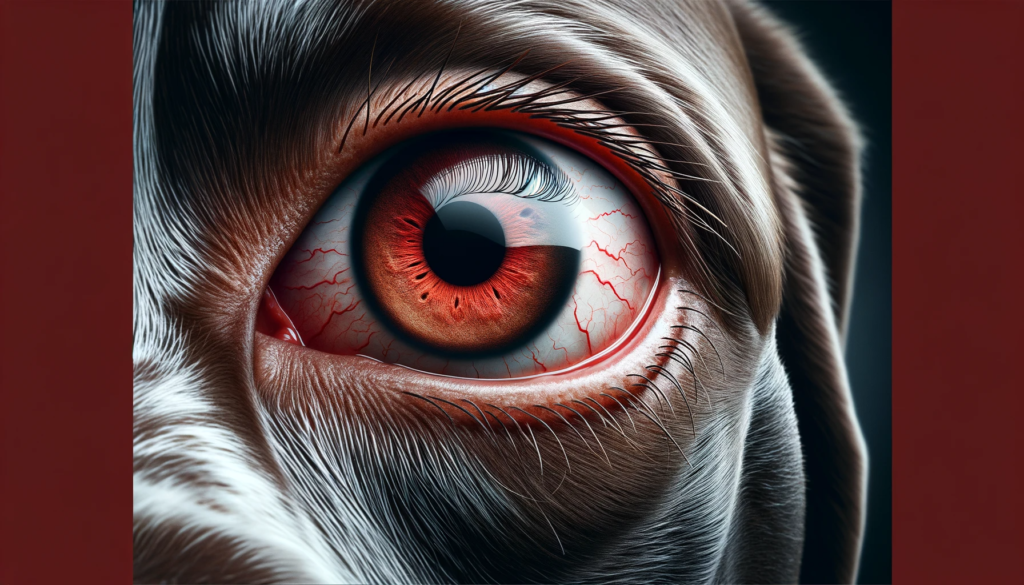
Understanding Canine Eye Anatomy
When we gaze into our dog’s eyes, we’re not just met with boundless love and loyalty; we’re also looking at an intricate and fascinating biological system. Before we delve into the reasons behind the appearance of a thick red vein in your dog’s eye, it’s essential to have a basic understanding of their eye anatomy. This will make it easier to understand why certain health issues can lead to changes in your dog’s eyes.
Just like our eyes, a dog’s eye is a small, yet incredibly complex organ. It’s designed to convert light signals from the environment into electrical signals that the brain can understand, allowing our furry friends to perceive the world around them.
Starting from the outside, we first come across the cornea – it’s like a clear window that allows light to enter the eye. Behind the cornea, you’ll find the iris, the colored part of the eye that controls the amount of light that enters the eye through the pupil. Further in, the lens focuses the light onto the retina, a light-sensitive layer lining the back of the eye. The retina is filled with photoreceptor cells that convert light signals into electrical ones. These are then sent to the brain via the optic nerve.
Embedded in the eye structure are tiny blood vessels, and this is where our topic of discussion comes into play. These vessels provide essential nutrients and oxygen to the various parts of the eye. They’re usually quite small and not easily noticeable. However, under certain circumstances, these vessels may become more prominent, appearing as thick red veins.
As we navigate through this guide, remember the critical role that these blood vessels play in maintaining your dog’s vision. It’s all a part of the beautiful complexity that makes our dogs see the world (and us) in their unique way!
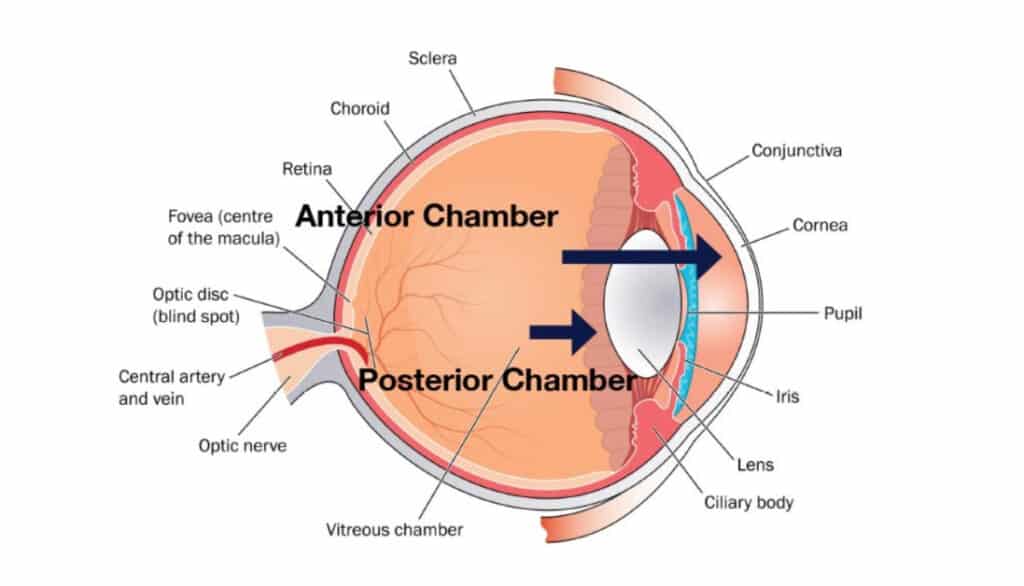
Reason 1: Eye Infections
Eye infections can sneak up on our furry friends, just as they can on us humans. And, like with humans, they can lead to significant discomfort and noticeable changes in your dog’s eye. This could include the emergence of a thick red vein. But why does this happen?
When your dog’s eye gets infected, it’s essentially under attack. The body responds to this attack by increasing blood flow to the affected area to help fight off the infection. This can lead to what we know as inflammation. This enhanced blood flow can cause the tiny blood vessels in your dog’s eye to expand, making them appear as thick, red veins.
Symptoms of Eye Infections in Dogs
- Redness in the eye or surrounding area
- Swelling of the eye or eyelids
- Discharge from the eye, which may be clear, yellow, green, or even a thick pus-like substance
- Frequent blinking or squinting
- Pawing or scratching at the eye
- Sensitivity to light
- Cloudiness or changes in eye color
- Visible discomfort or pain (whining, restlessness)
- Changes in behavior, such as loss of appetite or decreased activity levels
- Keeping one eye closed or partially closed
There are a myriad of microorganisms, such as bacteria, fungi, and viruses, that can cause eye infections in dogs. Signs that your dog might have an eye infection include redness, swelling, watery or pus-like discharge, frequent blinking, squinting, and your dog rubbing their eye with a paw or on furniture. You may notice that your dog’s eye looks different, maybe even a bit scary. But remember, this is your dog’s body working hard to defend itself.
If you suspect your dog has an eye infection, it’s crucial to seek veterinary attention promptly. Just like in humans, untreated eye infections in dogs can lead to more serious complications, including damage to the cornea and potential loss of vision.
The good news? Most eye infections in dogs are treatable, especially when caught early. Your vet may prescribe antibiotic or antifungal drops, ointments, or oral medications to combat the infection. They’ll also guide you on how to administer these treatments and any other care measures you’ll need to take.
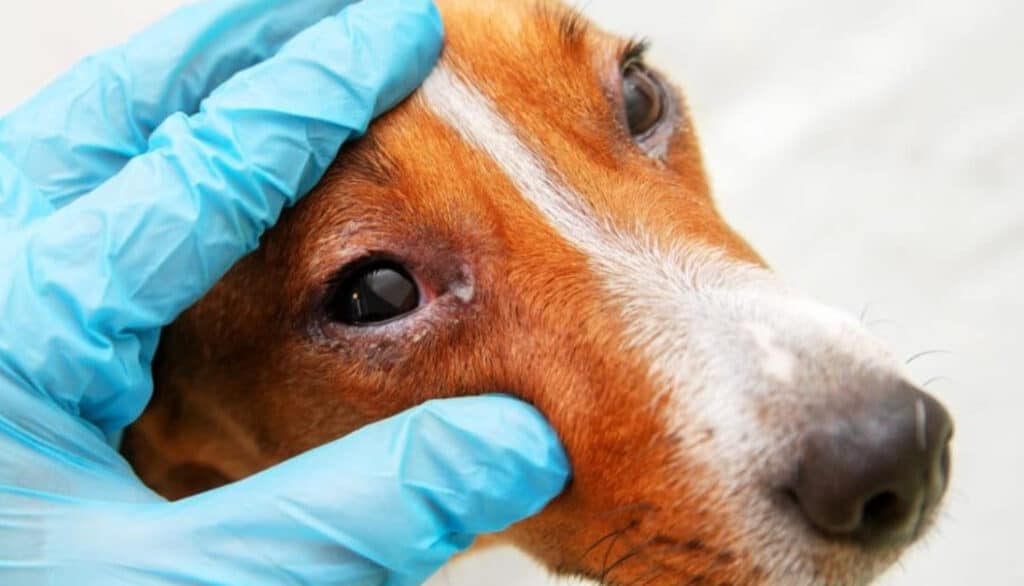
Reason 2: Allergies
While allergies in dogs might not manifest exactly like human sniffles and sneezes, they can still create a host of uncomfortable symptoms for your pet, including changes in their eyes. Yes, that thick red vein you’ve noticed in your dog’s eye might be due to an allergic reaction. But what does this mean?
Just like us, dogs can be allergic to a wide range of substances. Common allergens for our furry friends include dust, pollen, certain foods, mold, and even some types of fabrics. When a dog with an allergy encounters these allergens, their immune system kicks into overdrive, resulting in inflammation. As we learned in the previous section, inflammation causes increased blood flow to the area, leading to the appearance of those thick, red veins in your dog’s eyes.
Symptoms of Allergies in Dogs
- Frequent scratching or licking
- Red, inflamed skin
- Hives or skin rash
- Swelling of the face, ears, lips, eyelids, or earflaps
- Red, inflamed eyes
- Sneezing
- Vomiting
- Diarrhea
- Chronic ear infections
- Excessive paw licking or chewing on paws
- Changes in behavior, such as increased agitation or anxiety
- Loss of appetite or weight
So, what can we do to help our dogs when allergies strike? Firstly, it’s crucial to identify the allergen causing the reaction. This might involve some detective work and help from your vet. Once you’ve identified the allergen, the best course of action is to reduce or eliminate your dog’s exposure to it.
In some cases, medication might be necessary to control the allergic reaction and relieve your dog’s symptoms. Steroids, antihistamines, or special eye drops can be prescribed by your vet to help reduce eye inflammation and discomfort. In severe cases, your vet may suggest allergy testing and immunotherapy, a series of injections to help your dog’s immune system tolerate the allergen better.
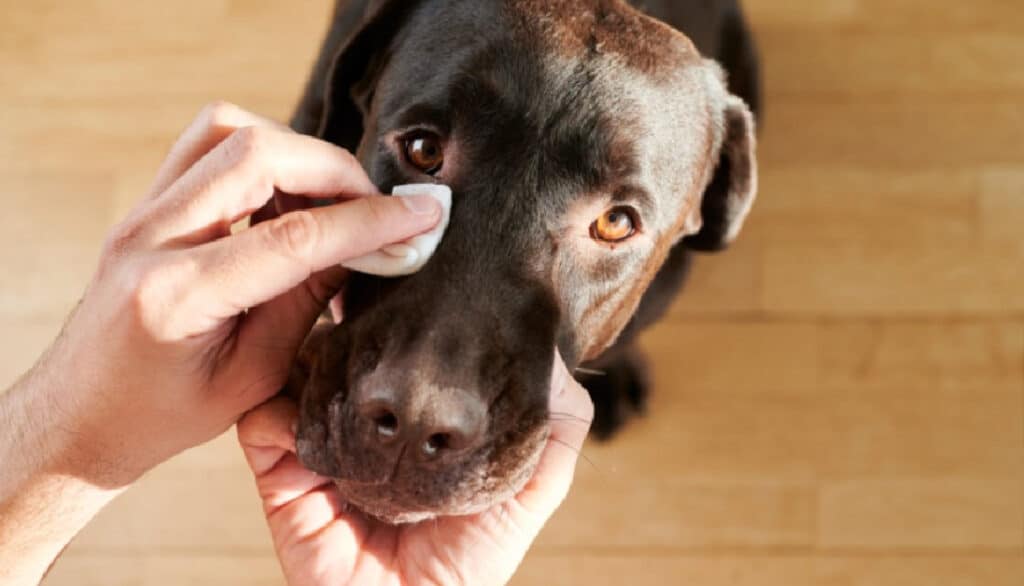
Reason 3: Physical Trauma
There’s no denying that our dogs are adventurous creatures. Their zest for life and curiosity can sometimes lead to them getting into scrapes and bumps. While many of these minor accidents don’t cause significant harm, physical trauma to the eye can lead to those alarming thick red veins.
Physical trauma to your dog’s eye could be due to a variety of reasons – from an innocent game of fetch going slightly awry, a prickly encounter with a bush during a walk, or an unfortunate scrap with another animal. Whatever the cause, any trauma to the eye area can result in inflammation. The body, in its bid to aid the healing process, increases blood flow to the injured area, leading to the appearance of those thick, red blood vessels.
Signs of physical trauma to your dog’s eye
- Redness or inflammation in the eye
- Swelling around the eye or eyelid
- Visible scratches or wounds near the eye
- Bleeding from the eye or surrounding area
- Tearing or discharge from the eye
- Excessive blinking or squinting
- Keeping the eye closed or partially closed
- Pawing or scratching at the eye
- Sensitivity to light
- Visible discomfort or changes in behavior
If you suspect your dog has sustained an eye injury, it’s important to remain calm and act quickly. Try to prevent your dog from rubbing their eye and causing further damage. Consult with a vet immediately, as some eye injuries can rapidly progress to serious conditions if left untreated.
Your vet may prescribe medications to reduce inflammation and pain, or in more serious cases, surgical intervention may be required. As the saying goes, “prevention is better than cure”. Hence, keeping a watchful eye on our pets during their adventures, and puppy-proofing our homes, can go a long way in avoiding these situations.

Reason 4: Dry Eye Syndrome
Dry eye syndrome, known scientifically as Keratoconjunctivitis Sicca (KCS), is a condition that might not be as familiar to many dog owners. However, it’s a common issue that can significantly impact your dog’s eye health, including leading to the appearance of thick red veins.
Dry eye in dogs occurs when their eyes don’t produce enough tears to stay properly lubricated. Tears are essential for maintaining the health of the front surface of the eye and for providing clear vision. So, when there are insufficient tears, the eye can become irritated and inflamed.
Your dog’s body may respond to this irritation by increasing blood flow to the area to bring in healing resources, leading to the expansion of the small blood vessels in the eye. This can cause those blood vessels to appear as a thick, red vein.
Symptoms of dry eye syndrome in dogs
- Redness in the eye
- Visible discomfort or pain (squinting, pawing at the eye)
- Thick discharge from the eye, which might resemble mucus
- Frequent blinking
- Cloudiness in the eye
- Changes in behavior, such as decreased activity or changes in appetite
- Sensitivity to light
Vets can diagnose dry eye syndrome using a simple test that measures tear production. If your dog is diagnosed with KCS, they’ll likely require lifelong treatment to manage the condition. This can involve topical medications to stimulate tear production or to substitute for the lack of natural tears.
As we continue our journey into the world of canine eye health, it’s essential to remember that our dogs rely on us for their well-being. Regular check-ups and keen observation can help catch conditions like dry eye syndrome early, giving your dog the best chance at maintaining their eye health. Up next, we’re exploring another potential cause of those alarming red veins in your dog’s eyes: glaucoma. Stay tuned!

Reason 5: Glaucoma
If you’ve heard of glaucoma before, you might associate it with human eye health. But did you know that dogs can also suffer from this condition? Glaucoma in dogs is a serious eye condition that can cause red veins in your dog’s eyes and can potentially lead to vision loss if left untreated.
Glaucoma occurs when there’s an increase in pressure within the eye. This can be due to the eye producing too much fluid, known as aqueous humor, or not draining this fluid properly. The excess pressure can damage the optic nerve, leading to vision loss.
One of the body’s responses to this increased pressure is to increase blood flow to the eye. This can cause the small blood vessels in the eye to expand, resulting in a thick red vein.
Symptoms of Glaucoma in Dogs
- Redness in the eye
- Cloudiness in the eye
- Enlarged or bulging appearance of the eye
- Visible discomfort or pain (squinting, pawing at the eye)
- Tearing or excessive discharge from the eye
- Changes in behavior, such as decreased activity or changes in appetite
- Sensitivity to light
- Dilated pupil that doesn’t respond to changes in light
- Loss of vision (in advanced cases)
If you notice any of these symptoms in your dog, it’s essential to seek veterinary care immediately. Glaucoma can progress rapidly, and timely intervention is crucial to preserve your dog’s vision. Your vet can diagnose glaucoma by measuring the pressure in your dog’s eyes and recommend an appropriate treatment plan, which may include medication to decrease fluid production or surgery in severe cases.

Other Potential Reasons
While we’ve covered some of the most common causes behind the thick red veins in your dog’s eyes, our understanding of canine eye health is a constantly evolving field, and there may be other factors at play. Like humans, every dog is unique, and their bodies might respond differently to various conditions.
For example, exposure to irritants like smoke, chemical fumes, or certain types of plants can cause irritation and inflammation in your dog’s eyes. Older dogs may experience changes in their eyes due to the natural aging process, just as we do. Certain breeds may also be predisposed to specific eye conditions due to their genetic makeup.
In some cases, the redness might even be due to something as simple as eye strain. Just like humans, dogs can strain their eyes too, especially if they’re exposed to bright lights for extended periods.
Lastly, systemic diseases, like high blood pressure or diabetes, can also lead to changes in the blood vessels in your dog’s eyes. These conditions can increase the pressure in the tiny blood vessels, making them more prominent.
The bottom line is, if you’ve noticed a thick red vein in your dog’s eye, it’s essential to monitor their condition and seek veterinary advice. It could be a minor, temporary issue, or it could indicate something more serious. By staying vigilant and proactive, we can ensure our beloved pets stay as healthy and comfortable as possible.
In our next section, we’ll provide tips on how you can maintain your dog’s eye health and prevent some of the conditions we’ve discussed. Stay with us on this insightful journey into your dog’s world through their eyes!

The Importance of Regular Veterinary Eye Examinations
We’ve navigated our way through the complex world of canine eye health, and now it’s time to stress the importance of one particular aspect of your dog’s healthcare routine – regular veterinary eye examinations.
Our dogs might not be able to tell us in words when they’re not feeling their best, but their bodies often show signs. And their eyes, often dubbed the windows to the soul, can be particularly revealing. Regular veterinary eye examinations are the key to catching and addressing potential eye health issues early, before they become serious problems.
During an eye examination, your vet will closely inspect your dog’s eyes, looking for any signs of the conditions we’ve discussed in this blog, as well as any other potential issues. They’ll likely use special equipment to view the structures of your dog’s eyes in detail, measure the pressure inside the eyes, and assess your dog’s tear production.
These examinations can catch early signs of conditions like infections, dry eye syndrome, or glaucoma, often before you’ve noticed any symptoms at home. This early detection can be vital, as many eye conditions can progress rapidly and can potentially lead to vision loss if left untreated.
The frequency of eye examinations can depend on your dog’s age, breed, and health history. Dogs with a higher risk of eye conditions, such as older dogs or certain breeds, may benefit from more frequent check-ups. Your vet can provide personalized advice on the best schedule for your pet.
In between vet visits, it’s crucial to keep an eye out for any changes in your dog’s eyes, including the appearance of thick red veins. If you notice any changes, don’t hesitate to reach out to your vet. As dog owners, our vigilance is an essential part of our dogs’ health and well-being.
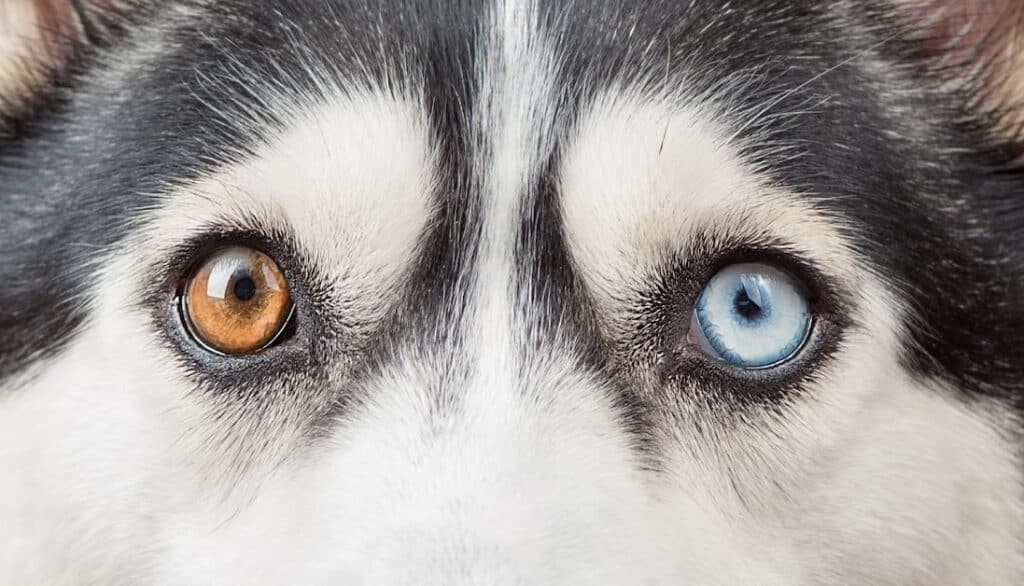
Conclusion
And there we have it – an in-depth look at why there might be a thick red vein in your dog’s eye. From infections and allergies to physical trauma, dry eye syndrome, glaucoma, and even less common causes, we’ve explored a wide range of possibilities. We’ve also highlighted the importance of regular veterinary eye examinations in maintaining the health of your furry friend’s eyes.
But remember, while this guide serves to provide insight and information, it cannot replace professional veterinary advice. If you’ve noticed changes in your dog’s eyes or any other signs of discomfort or distress, it’s important to reach out to your vet promptly. Your dog’s health is a team effort, with you, your furry friend, and your vet each playing a crucial role.
Our journey into the world of canine eye health has been insightful, but it’s just the tip of the iceberg. As responsible pet owners, we have a duty to continue learning and understanding our pets’ health, ensuring they lead the happiest, healthiest lives possible.
As we close this chapter, remember, the love and companionship our dogs provide us are invaluable. Let’s repay them with our vigilance and dedication to their health. Together, we can ensure our furry friends’ eyes continue to sparkle with joy and vitality, just as they light up our lives.
Thank you for joining us on this exploration of canine eye health. Until next time, keep loving and learning about your furry companions – they’re worth every moment!
~Lindsie
